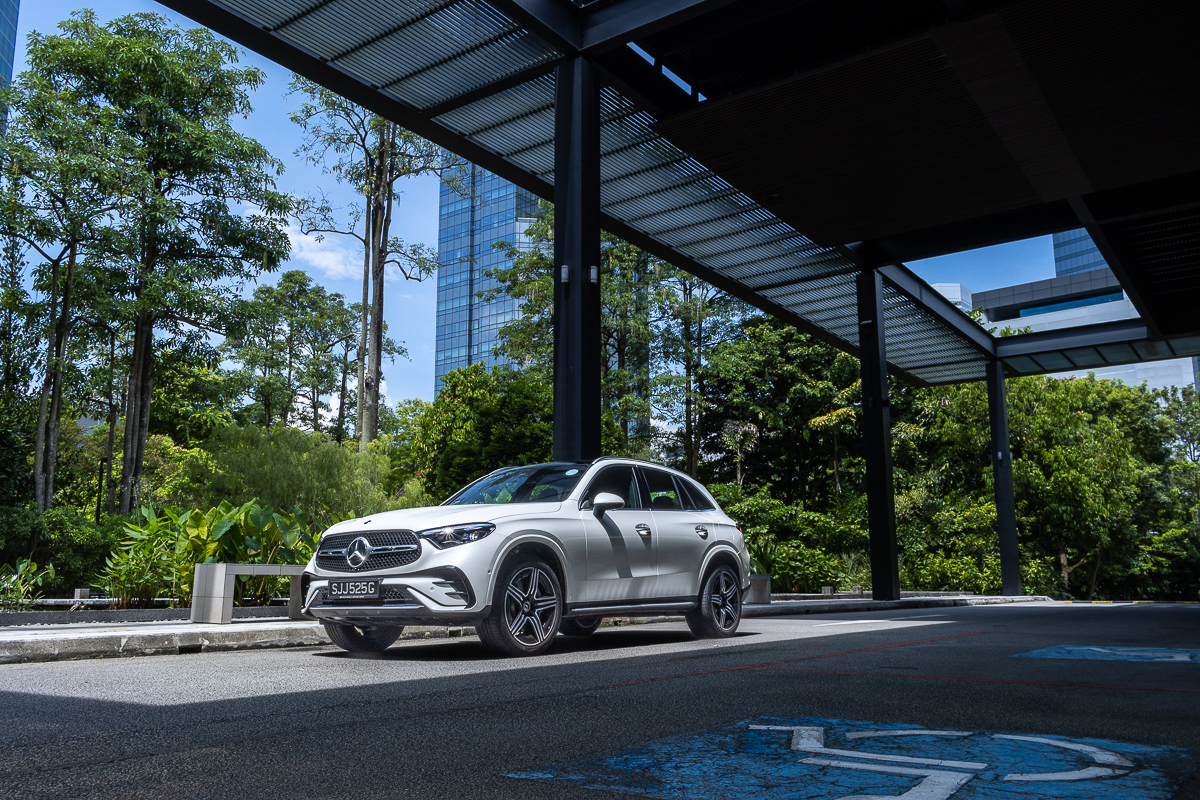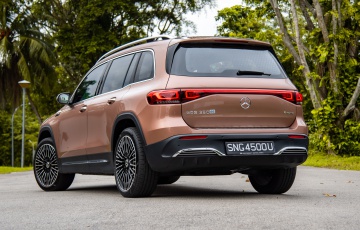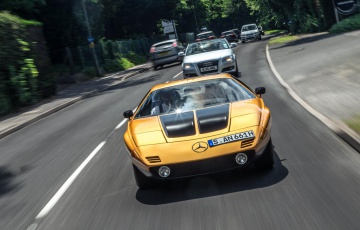2023 Mercedes-Benz GLC 300e 4MATIC AMG Line Review : Sales-Generator
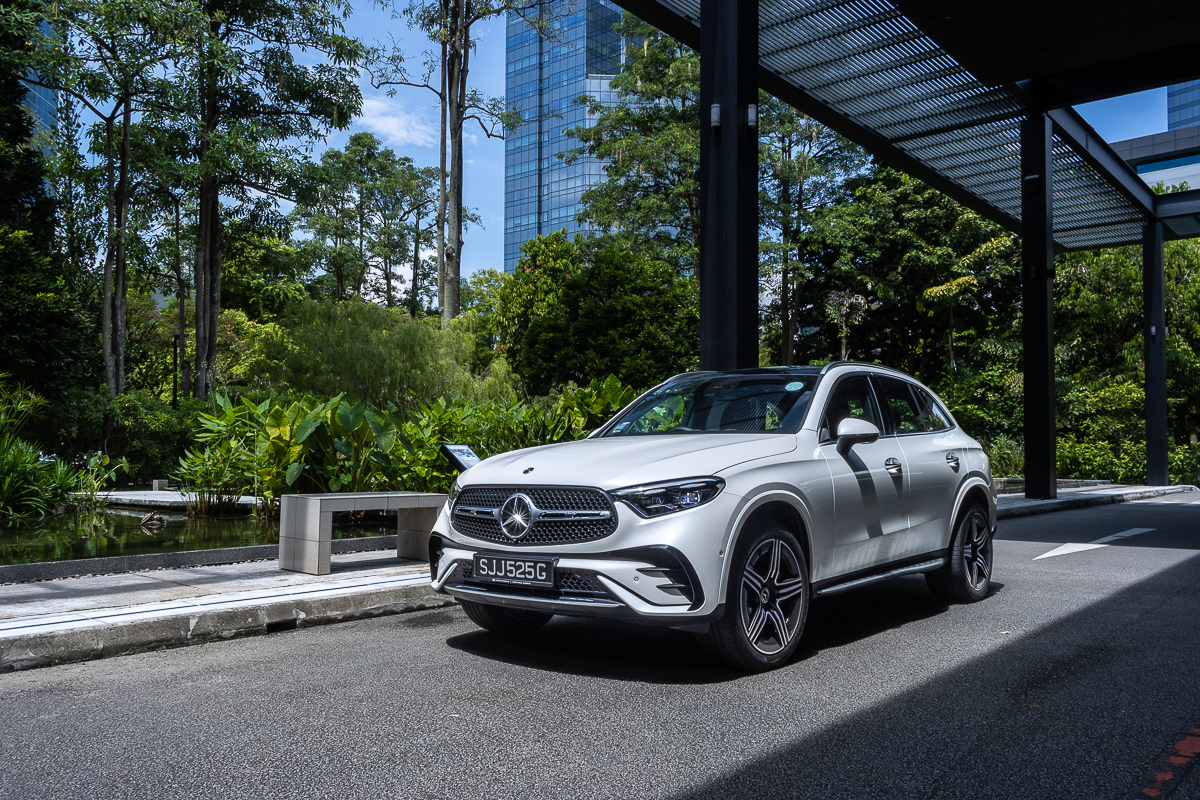
2023 Mercedes-Benz GLC 300e 4MATIC AMG Line Review : Sales-Generator
Singapore - At first glance, you could hardly tell the difference between the all-new Mercedes-Benz GLC SUV, and its predecessor. After-all, they have the same design DNA. But this is a good thing right? This is quite the norm with German brands, and it has its advantages. I mean, you wouldn’t want to have owners of older models feeling their car is long-in-tooth.
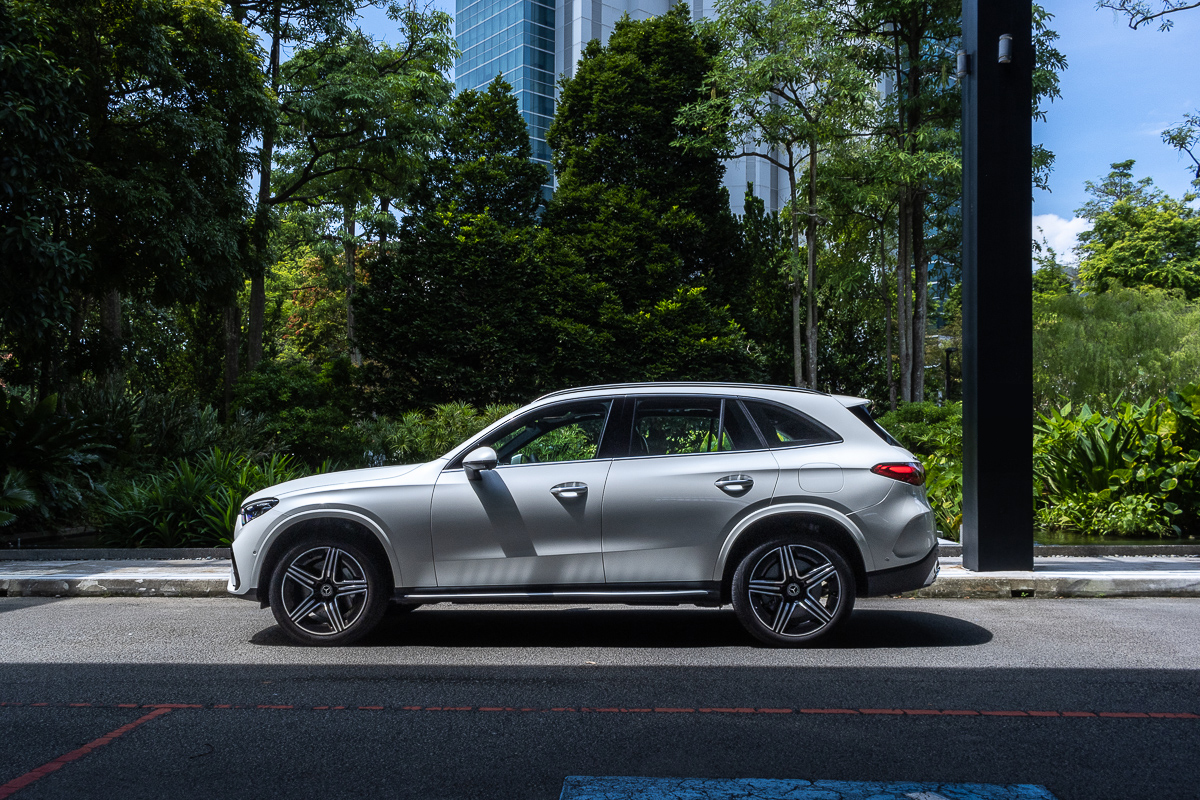
The second-generation Mercedes-Benz GLC has plenty to live up to. Though it is similar in dimensions to the previous car, and even retains the same width, it does have a wider track. The visual tweaks to the new Junior Executive SUV are also subtle. For-instance, the character line, which runs across the side, is now less assertive, but it comes across as more refined. Also, an elegant-thin surround, forming the border between the grille and the headlights, replaces what was recently a thick frame. At the rear, slimmer triangular tail lights carry a subtle ribbed light signature, which pay homage to older Mercedes-Benz cars; a design trait first found on the R107 SL, and then on the face-lifted W115 (E Class predecessor).
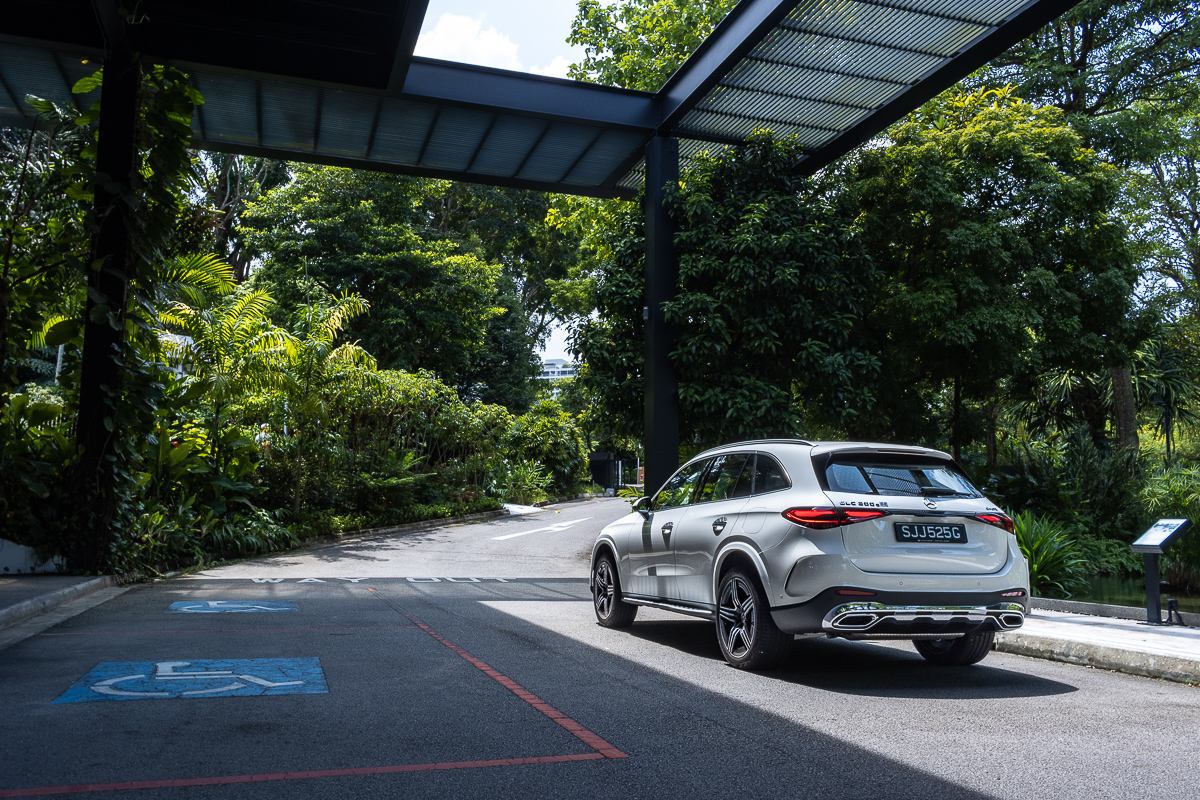
Interior
Staying consistent with current Mercedes-Benz interiors, the GLC’s is futuristic-yet-cold, this is so, even with a good amount of organic shapes fed-in. On this test car, fitted with AMG LIne trim, the carbon fibre inserts do little to visually “calm” the interior. That aside, the build quality here is very good.
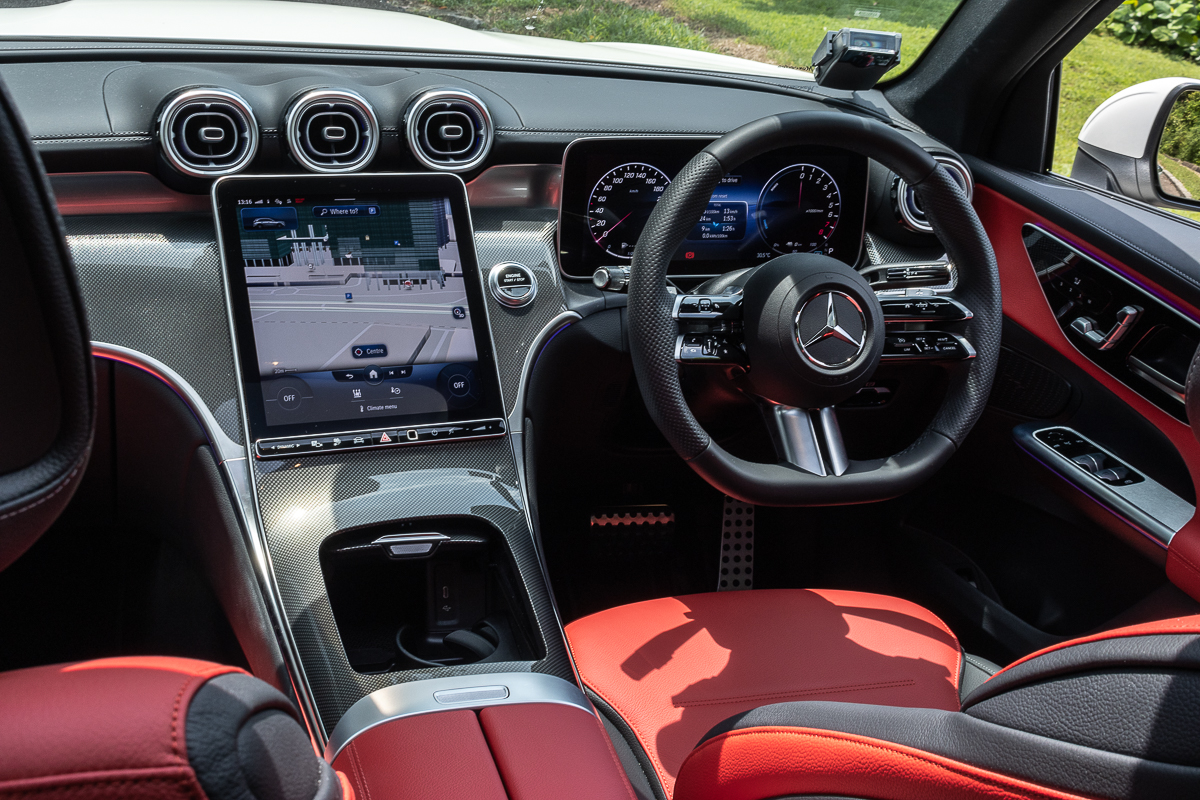
The “floating” 11.9-inch infotainment touchscreen, which is located under the air-conditioning vents looks massive, but the illusion of size is in-part due to its vertical format. The second-generation MBUX system is arguably one of the best voice-activated systems out there at present, and perhaps only second to the BMW Operating System 8’s ability to understand speech. That said, the infotainment’s interface is simple enough to navigate, and made even better, thanks to an easy learning curve. One of its features I’d like to mention is its advanced SatNav system, which is bolstered with augmented reality, utilising a front-facing camera to register the car’s surroundings.
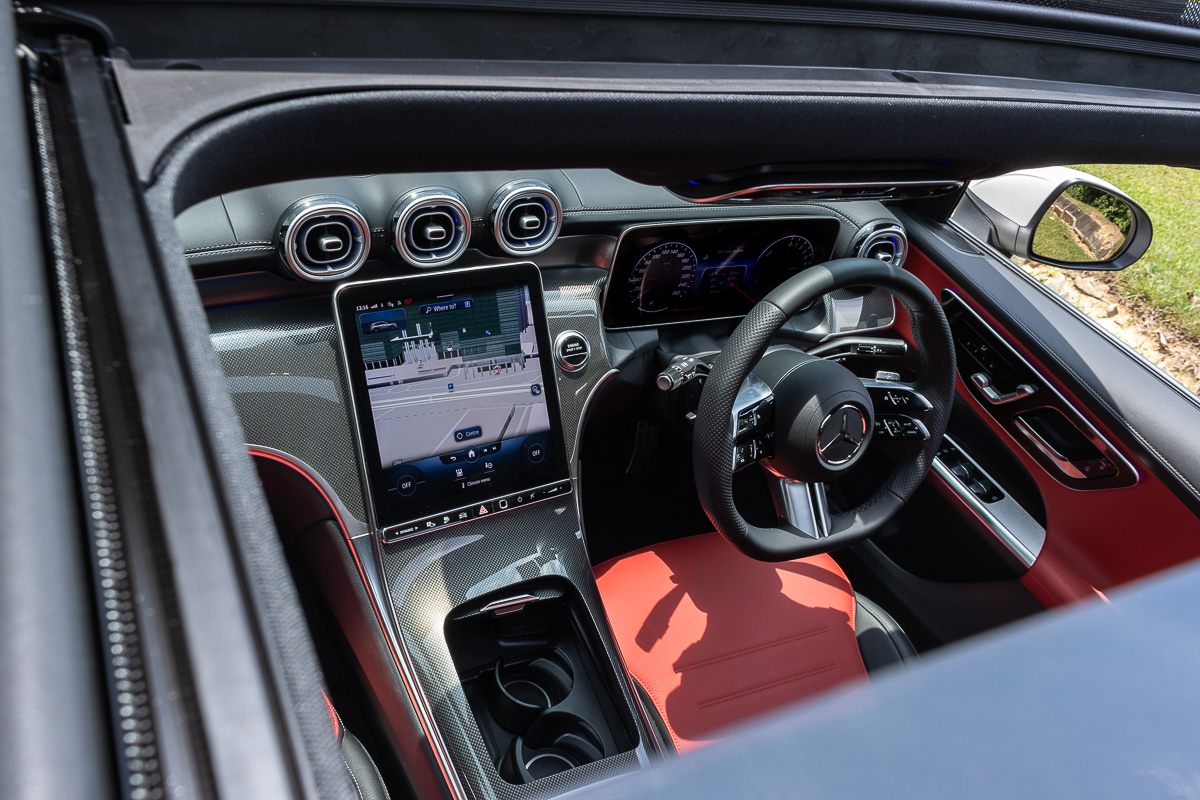
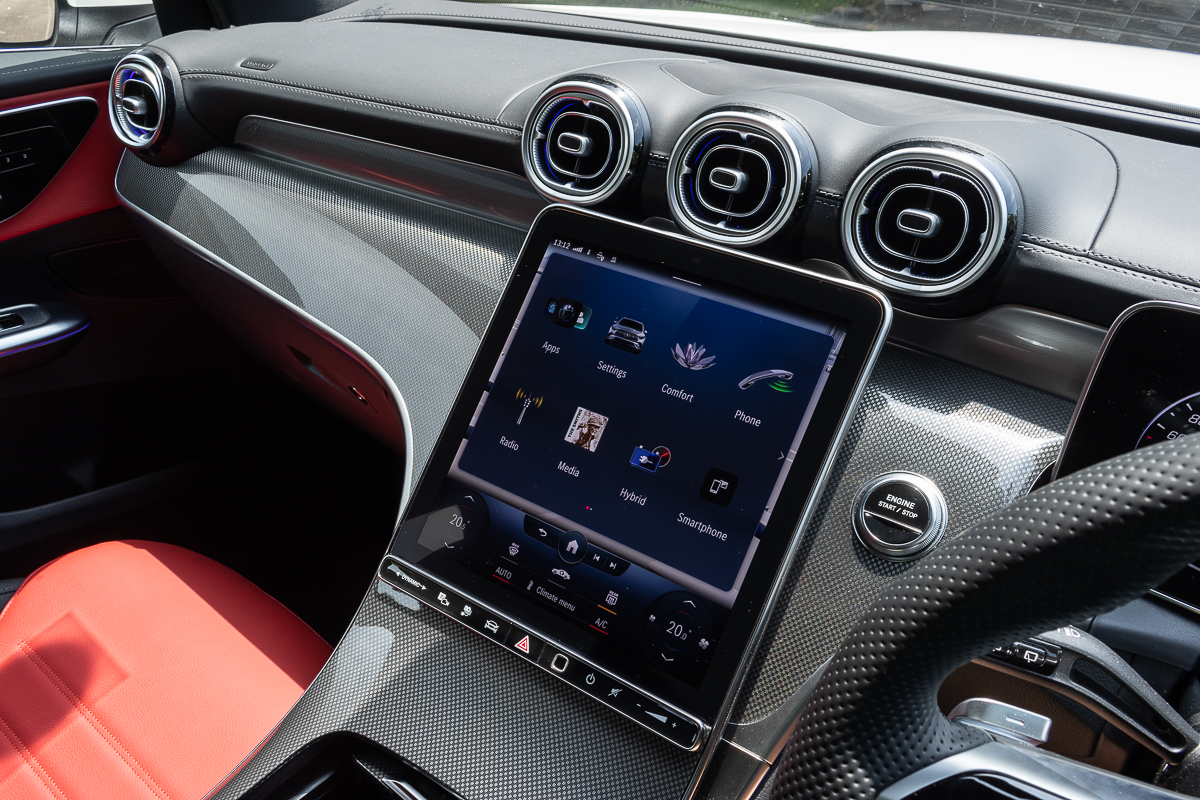
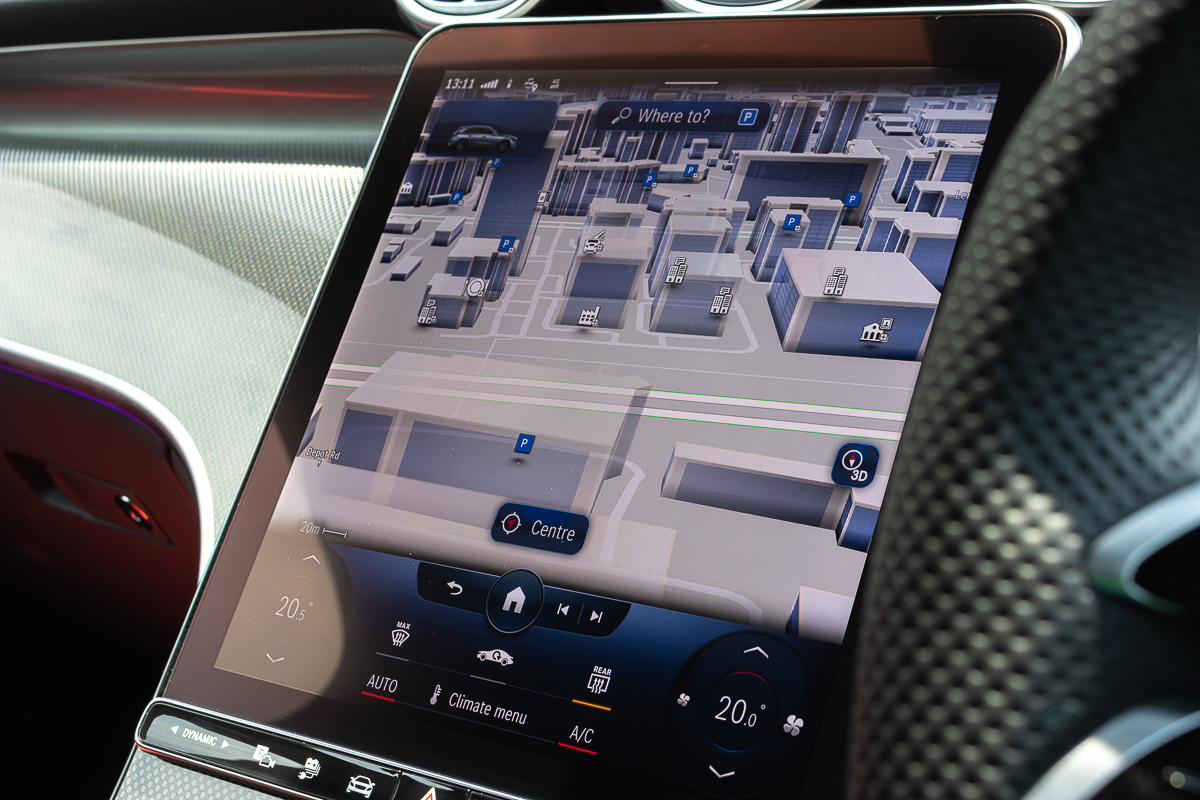
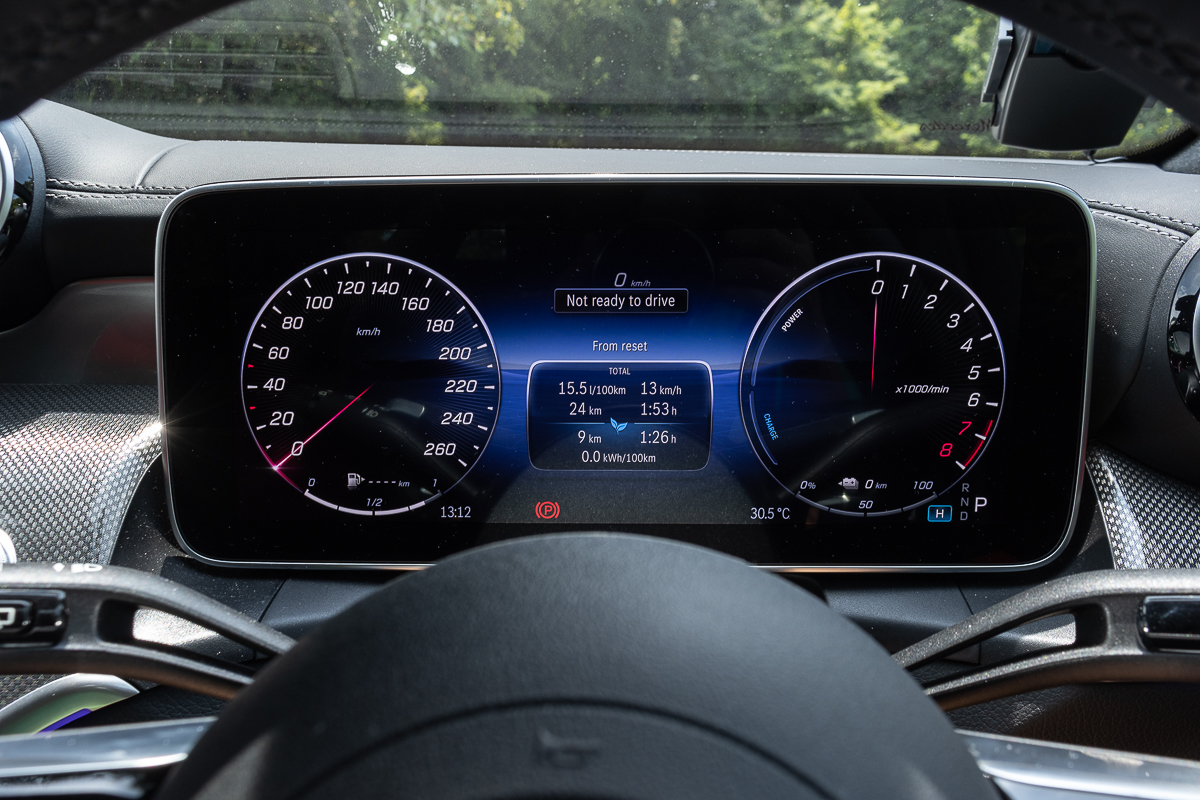
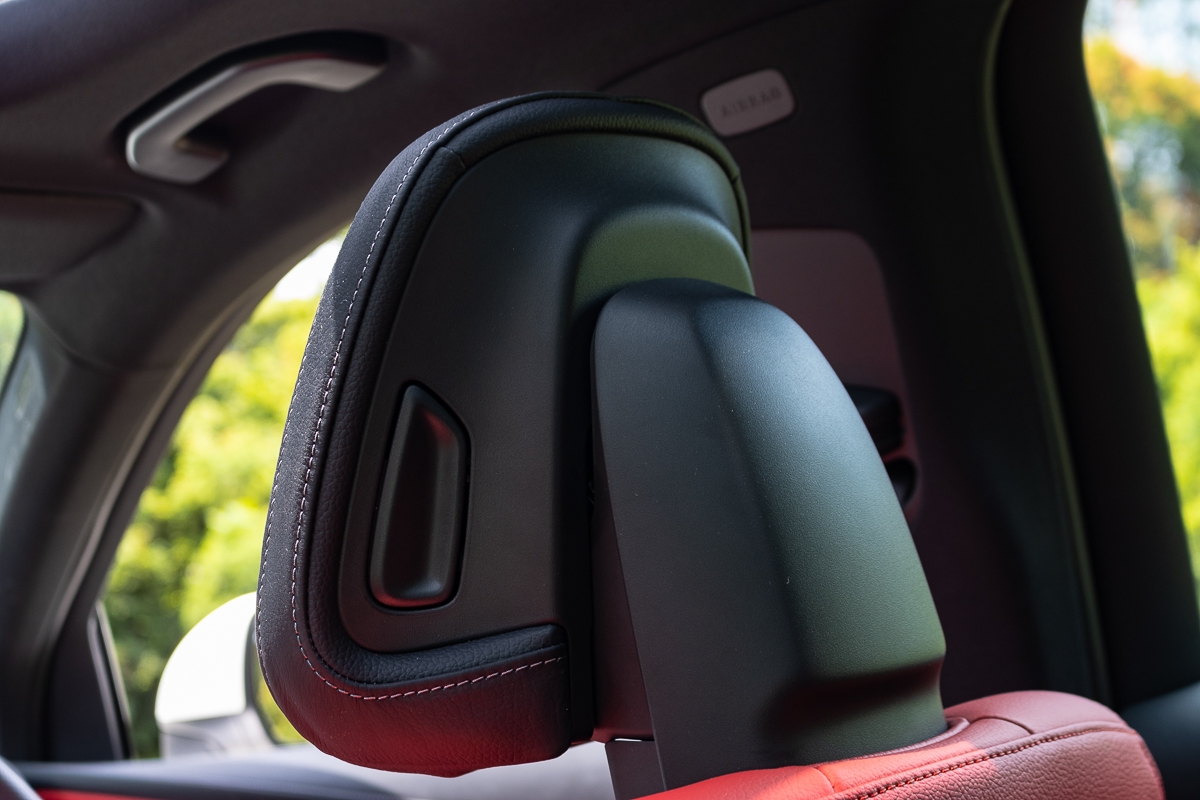
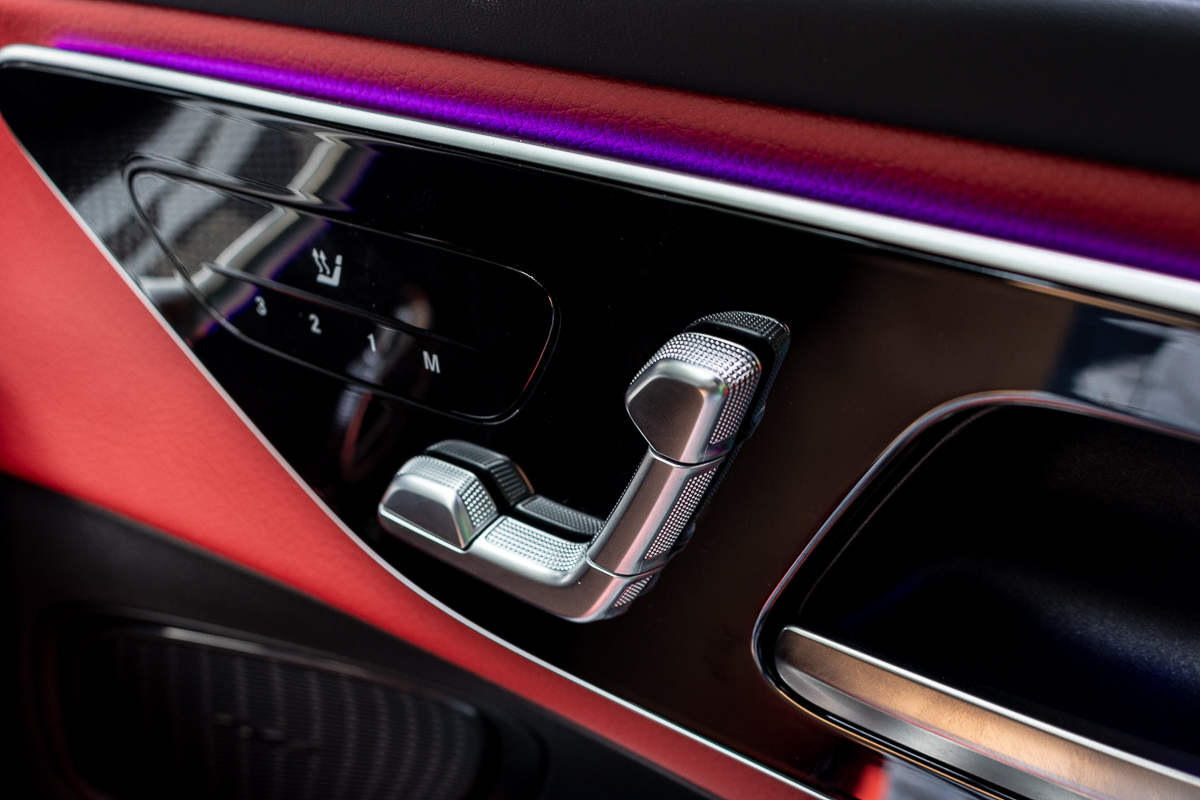
The current Mercedes-Benz trend of having their driver displays devoid of binnacles, adds more symmetry and less clutter to the dashboard design. The 12.3-inch display sits upright, and devoid visually of any support from behind, and features some customisable graphics to suit your needs. A flat-bottomed six-spoke steering wheel is also part of the AMG kit, which I feel is better in design (prettier too) than the standard-spec wheel. I say this as you seemingly drive with your palms further away from the buttons situated on the spokes.
Like in the previous car, passenger space is more-than-decent, and there is no fuss about leg room even for those at the rear. However, since this is the PHEV variant, cargo space on the other hand, is greatly compromised. The boot area is shallower, since the floorboard has been raised to accommodate the batteries. However, thanks to the new GLC’s longer rear overhangs, you do still have 470 litres, which when put into perspective, is still 32 litres more than what is offered in the Volvo XC60. That said, the MHEV version is the one which truly benefits when it comes to cargo-carrying capacity. Its boot is significantly larger by some 70-litres, when compared to the previous GLC, bringing cargo volume up to 620-litres. This would be by far the largest in-class. To provide some scale, the BMW X3 comes in a distant second at 550-litres.
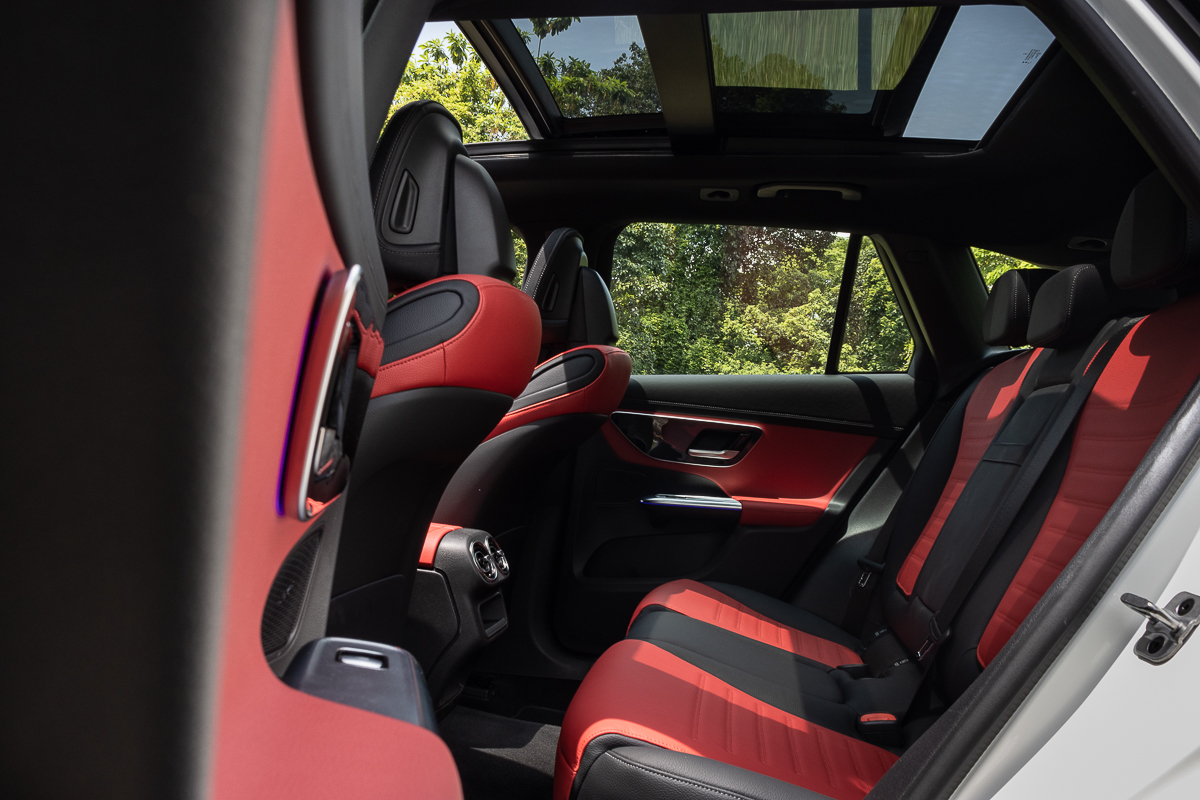
The MHEV and PHEV variants are the only two GLC models available for the moment. Both share the same 2.0-litre turbocharged engine, with the mild-hybrid variant putting out 258hp and 400Nm. The PHEV we are driving on the other hand, boasts a system delivery of 313hp and 550Nm. Most of the powertrain’s torque is available from the moment your foot depresses the accelerator pedal, with much of the initial push being contributed by the electric motor. On its own, the motor puts out 136hp and 440Nm, which in-turn, contributes significantly to the GLC’s fuel efficiency. Mercedes-Benz say that the electric architecture is able to provide a range of up to 138km, through its 31.2kWh battery alone. Apart from plugging-in to charge, the battery can return a fraction of its energy through braking or when coasting.
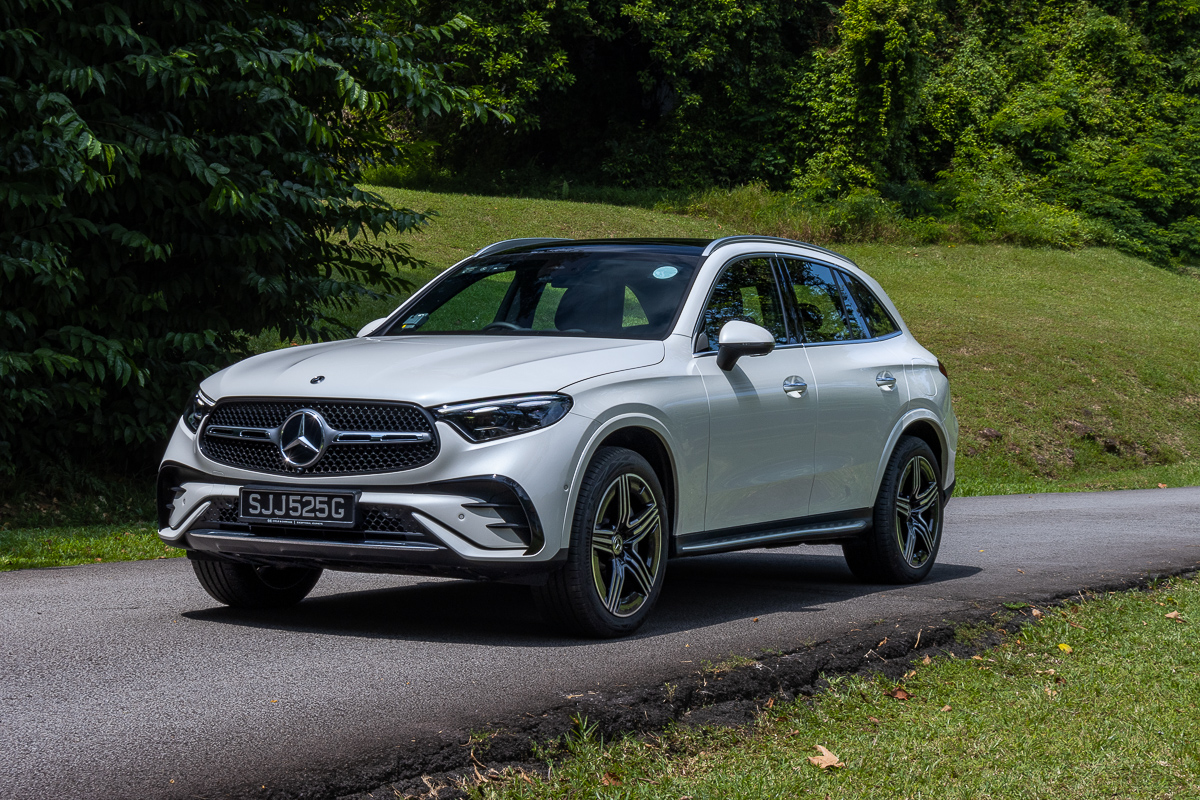
On the road, I truly can appreciate how well-sorted and refined the ride is. While comfort is probably at the top of the car’s design brief, the GLC also exhibits very good road manners. Even with that huge battery at the rear, it still feels accurate (for an SUV), as you stuik it into a corner. The rear-biased AWD system works on a default front:rear 39:69 distribution, where it is able to distribute more drive to whichever axle needs most, and also contributes to what is a pretty dynamic driving experience.
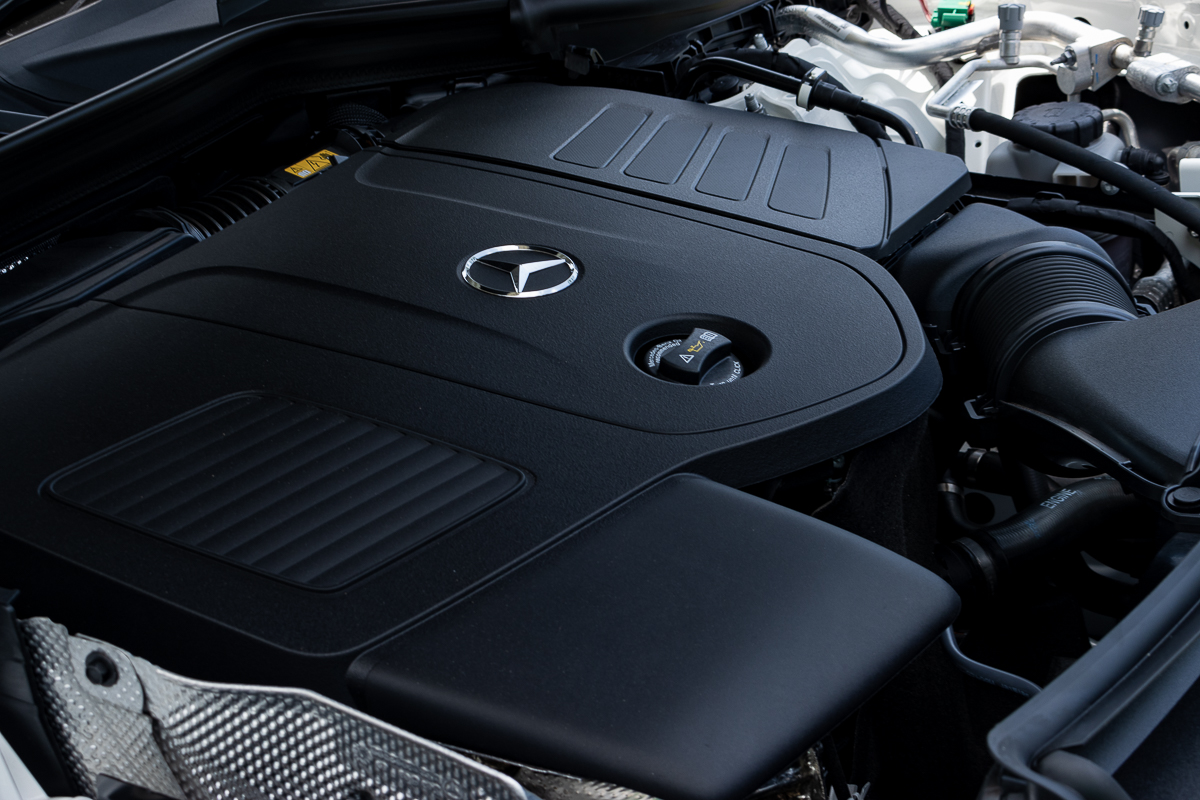
I managed an average fuel figure of about 29.7km/l, which is good. The positive fuel numbers are largely attributed to much of the taking-off and heavy acceleration being bolstered by the electric motor. However, the motor, plus its electric power source adds a whole 430kg more to the SUV, when compared to the MHEV variant. So it is slower to 100km/h, clocking this in at 6.7 seconds, over the latter’s 6.2 seconds to the same benchmark.
But…
While everything seems all fine-and-dandy so far, I would need to mention something which is potentially a deal breaker, which has got nothing to do with the need for a plug-in to charge.
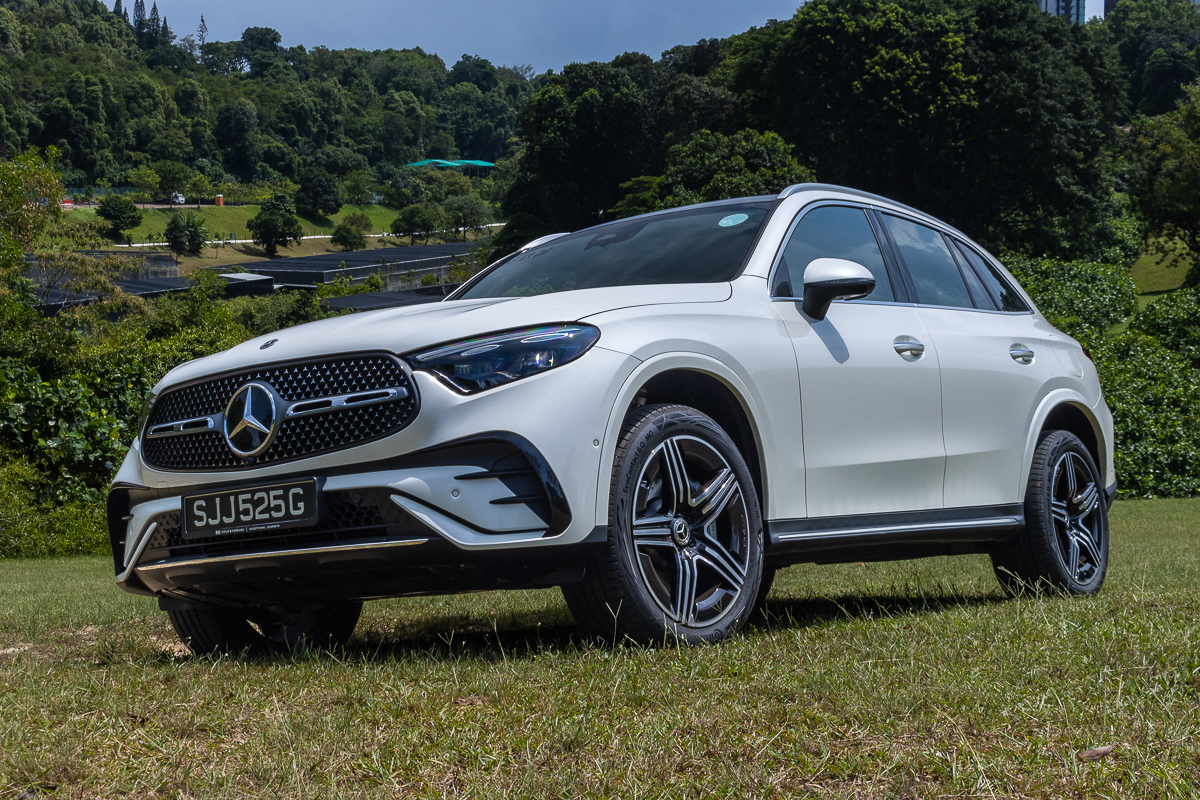
When getting the SUV to a stop, the motor re-engages while the engine begins shutting off, the former which then scavenges for energy. This brings about an assortment of jerks and lurches, which is nothing short of unpleasant, and also not bueno for your passenger who is balancing takeout sushi, with the soy sauce open, and with the ball of wasabi still rolling around - uncanny crudeness from a car bearing a three-pointed badge, which I am unable to get around.
That above-mentioned issue aside, the new GLC 300e is pretty well-sorted Junior Executive transport. But maybe, just maybe the MHEV would fare much better.
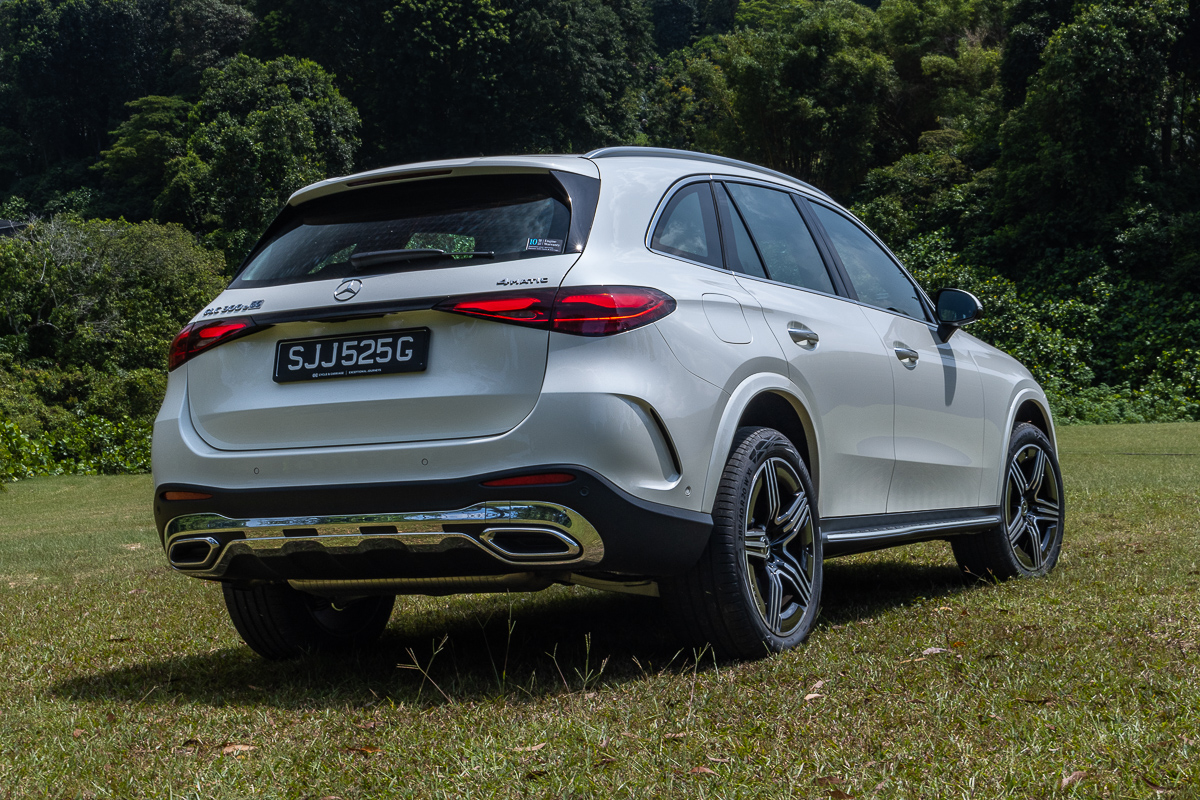
Competition in this segment is rather stiff, with offerings available from up and down powertrain options, with the Lexus NX 450h+ PHEV and Volvo XC60 Recharge Plug-in Hybrid, as direct competition. Expanding on this category, you can also choose from options which include the BMW X3, Lexus NX 350F Sport, the ageing Audi Q5, and Alfa Romeo Stelvio.
TEXT & PHOTOS Clifford Chow
2023 Mercedes-Benz GLC 300e 4MATIC AMG Line
Engine 1999cc, inline4
Power/rpm 204hp/6100rpm
Torque/rpm 320Nm/2000-3200rpm
Battery 31.2kWh, Li-Ion
Electric Motor 134hp/440Nm
System Power/Torque 313hp/550Nm
Transmission 9G-TRONIC
0-100km/h 6.7secs
Top Speed 218km/h (electronically limited)
Kerbweight 2280kg
Fuel Consumption 0.6L/100km (Combined, WLTP)
Efficiency 20.4kWh/100km (Combined)
CO2 19g/km
VES A2
